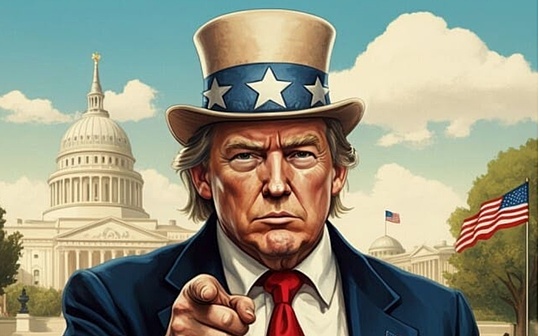137Labs Event on Curve: The Popular DeFi Solution and Its Innovative Ecosystem
On December 13, 2024, 137Labs hosted an X Space event titled “Understanding Curve: The Popular DeFi Solution and Its Innovative Solutions.” The event brought together experts from various fields, including TAO, a core contributor to FX Protocol; Ivan, a research analyst at 137Labs; and Oneone, head of 137Labs’ research team. Together, they explored the far-reaching impact of Curve as a cornerstone of DeFi, as well as how its innovative ecosystem is driving industry transformation.
About 137Labs: 137Labs focuses on identifying real market needs and helping users capitalize on investment opportunities in the Web3 space. We conduct in-depth research to select promising projects and provide clear, easily digestible information to support our users.
The Discussion: During the event, the experts delved into Curve’s core functions and innovations. They explained how Curve has become a critical pillar of DeFi, thanks to its unique stablecoin swap mechanism and diverse liquidity pools. They also explored how emerging protocols within its ecosystem are offering modular, low-risk, high-reward opportunities. Insights were shared on the future growth potential of f(x) Protocol and the modular development of DeFi, along with the role of new technologies in driving long-term platform growth.
This article will recap the key points discussed during the event and provide in-depth analysis of Curve’s core mechanisms and future potential, offering you valuable insights into the future of DeFi and opportunities in the crypto industry.
Q1: What is Curve Finance, and why is it considered a cornerstone of DeFi?
Oneone explained that Curve Finance is called a cornerstone of DeFi because it plays a vital role in the exchange and pricing of stablecoins. Curve is the only protocol that focuses solely on stablecoin swaps, ensuring the best exchange rates between stablecoins. It boasts the largest on-chain stablecoin pool, providing pricing services for coins like USDT, and supports liquidity for DeFi products like lending, contracts, and options. Therefore, Curve serves as a fundamental infrastructure for the entire DeFi ecosystem.
Ivan added that Curve’s three main services — Swap, CDP, and Lending — are all based on unique self-developed algorithms.
The Swap feature addresses the common “xy=k” constant product formula pioneered by Uniswap, which works for most trading pairs but struggles with stablecoin pairs. For stablecoin swaps, Curve developed its own “stableswap” algorithm to reduce slippage, allowing for liquidity management comparable to Uniswap V3, but at a fraction of the cost.
The CDP (Collateral-Debt Position) service allows users to use blue-chip assets like ETH or WBTC as collateral to mint crvUSD, enabling both lending and liquidity formation with stablecoin pairs.
The Lending service, powered by the LLAMMA algorithm, reduces reliance on price oracles and introduces a “soft liquidation” mechanism. In case of market downturns, users’ collateral is gradually converted into crvUSD to avoid forced liquidation, minimizing risks.
Curve also developed the PegKeeper mechanism to maintain the stability of crvUSD, ensuring it doesn’t “depeg” during market fluctuations.
Q2: What is the veToken Mechanism in Curve Finance, and what makes it unique?
TAO explained the concept of veTokens, where users lock CRV tokens into veCRV, which not only grants governance voting rights but also shares in Curve’s protocol revenues and rewards from third-party “bribes.” The weight of veCRV decreases over time, meaning users must continuously lock their tokens to maintain maximum voting power.
TAO also discussed the “bribery” mechanism, which is central to Curve’s economic model. Each week, veCRV holders vote on where to direct CRV emissions, which boosts liquidity in certain pools. This incentivizes liquidity providers to participate and adds depth to Curve’s pools.
TAO clarified that project teams (such as stablecoin issuers) also participate in this bribery process, using veCRV votes to direct emissions to their liquidity pools, ensuring their stablecoins remain liquid. This competition for CRV emissions is known as the “Curve War.”
Ivan pointed out that the veCRV mechanism offers three main benefits to users:
Revenue sharing: Users earn a share of Curve’s protocol revenues by holding veCRV.
Liquidity incentives: As liquidity providers, users earn CRV as incentives.
Bribery rewards: Users can earn additional rewards from projects seeking liquidity.
However, there is a downside: users must lock their tokens for up to four years to maximize rewards, which could be a barrier for some.
Q3: Why Did CRV Underperform Until November, and What Caused Its Surge in December?
TAO explained that CRV significantly underperformed until November due to negative publicity surrounding Curve’s founder and the liquidation of CRV positions on-chain. The Curve team, however, has always focused on product development rather than marketing or self-promotion, ensuring everything is transparent and on-chain.
The surge in CRV’s price in December, TAO noted, was due to two factors:
Curve’s protocol was undervalued.
The broader crypto market recovery and increased institutional interest, especially from firms like BlackRock, helped push CRV’s price higher.
TAO also pointed out that the initial token distribution was somewhat concentrated, leading to the founder holding a large portion of tokens. Over time, market corrections have helped distribute the tokens more evenly, contributing to a healthier ecosystem.
Oneone added that the price drop to $0.20 in June created buying opportunities, with institutions purchasing CRV at this low price. Furthermore, the reduction in Curve’s inflation rate in August (from 20% to 6%) made CRV more attractive due to limited supply and strong fundamentals. By December, the overall DeFi recovery, driven by liquidity injections from rate cuts, helped Curve regain its value.
Q4: What Are Some Valuable and Noteworthy Projects Within the Curve Ecosystem?
Ivan highlighted Convex, a key project within Curve’s ecosystem. Convex allows users to stake CRV tokens for a guaranteed 4-year lockup period, issuing cvxCRV tokens as proof of staking. Convex has become one of the largest holders of CRV, owning about 50% of Curve’s total token supply. As a result, Convex has significant influence within the ecosystem and often receives bribes from new projects seeking to boost liquidity.
Other noteworthy projects include StakeDAO, which offers similar services to Convex, and AladdinDAO with its Concentrator protocol, which reduces the high costs of reinvesting small amounts of capital (e.g., through gas fees on Ethereum).
TAO added that AladdinDAO’s Clever product offers leveraged positions without liquidation risk, using a unique mechanism that allows users to take on leverage by borrowing against their future rewards.
Q5: What Are the Growth Expectations for Curve in the Future?
Ivan shared two major growth areas for Curve:
RWA (Real-World Assets): Curve’s partnership with BlackRock and its potential integration of real-world assets will bring more liquidity and trading volume to the platform.
Forex Swap: With the rise of crypto payments, the trading volume for stablecoins like EURC and USDC is expected to grow, and Curve’s new forex trading algorithm positions it to capture a significant share of the trillion-dollar global forex market.
Conclusion
This X Space event provided valuable insights into Curve’s role as a DeFi powerhouse. Experts discussed how its innovative mechanisms, like the stablecoin swap, veToken system, and emerging projects, are pushing the DeFi ecosystem forward. Curve’s ongoing improvements are helping it attract liquidity, drive long-term growth, and ensure it remains a dominant force in the DeFi space.
Note: This article is for informational purposes only and does not constitute investment advice.
声明:本文系金色财经原创稿件,版权属金色财经所有,未经授权不得转载,已经协议授权的媒体下载使用时须注明"稿件来源:金色财经",违者将依法追究责任。
提示:投资有风险,入市须谨慎。本资讯不作为投资理财建议。
24小时热文

 美元体系的悲歌
美元体系的悲歌智堡Mikko
 中金:美国“对等关税”对中国资产影响
中金:美国“对等关税”对中国资产影响中金点睛

 从以太坊迁移:寻找空投的新大陆
从以太坊迁移:寻找空投的新大陆Biteye
 特朗普2.0与我们的应对(一):米兰报告解读
特朗普2.0与我们的应对(一):米兰报告解读TsinghuaCIFER


 加密市场惨淡 最全 2025 稳定币理财策略带你穿越牛熊
加密市场惨淡 最全 2025 稳定币理财策略带你穿越牛熊区块律动BlockBeats
 稳定币收益指南
稳定币收益指南金色精选


- 寻求报道
 金色财经APPiOS & Android
金色财经APPiOS & Android- 加入社群
Telegram - 意见反馈
- 返回顶部
- 返回底部





